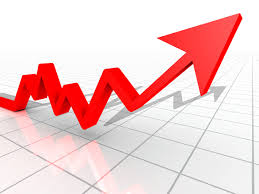
The RBA has been sweating on a rise in US inflation to trigger interest rate rises in that country to help lower the Australian dollar. The recent bounce in the CPI was encouraging and there is some argument today from Tim Duy of Fedwatch to give it further hope:
Yesterday I wrote a fairly conventional analysis of the outcome of the FOMC meeting and the subsequent press conference by Federal Reserve Chair Janet Yellen. I think that analysis is consistent with that of the median policymaker on Constitution Avenue: As long as the economy continues to grind upward at a moderate pace and inflation pressures remain constrained, the expected path of short term interest rates is one of a slow rise with the first hike somewhere around a year away.
That view is, of course, data dependent, and given the current readings on inflation and unemployment, combined with a policy stance that is basically ignoring both in favor of untested measures of underemployment, the risk is that the rate path is steeper, and the first hike comes sooner, than currently anticipated. Under the current circumstances, I expect the median policymaker’s willingness to risk falling behind the curve will decrease during the next six months.
Moreover, I would caution against interpreting Yellen’s soft inflation outlook as her being soft on inflation. I think quite the opposite message came through at yesterday’s press conference. Yellen was showing her hawkish side.
First, note that the Fed’s terminal Federal Funds rate edged down to 3.75% from 4% in March, a consequence of falling estimates of potential growth. The Fed thus appears to be conforming to the “new normal” in which equilibrium interest rates have fallen. In short, the Fed appears to take the terminal Fed Funds rates as exogenous.
The terminal Fed Funds rates, however, is not exogenous. It is an inflation markup over estimates of potential growth. The Fed could allow interest rates to return to normal by allowing expected inflation to rise. From the Fed’s point of view, however, the inflation rate is really not an endogenous choice. They view the 2% target is essentially exogenous, a number handed down in scripture, an element of the Ten Commandments. That the Fed should allow estimates of the terminal Fed Funds rate to fall is a testament to their commitment to the 2% target.
Perhaps, but let’s face it, they’ve been preoccupied with deflation and a persistent output gap for so long that jumping at shadows the moment inflation approaches 2% seems quite unlikely. There are many reasons to think that any inflationary pulse would be temporary. BofAML lists them:
One of the great ironies this year is that even as growth has disappointed to the downside, inflation has surprised to the upside. Most important, in the past three months, core CPI inflation has risen at the fastest rate since before the crisis. Moreover, the pick-up is fairly broad-based. Both goods and services inflation is higher and there appear to be only a couple anomalies—strong apparel price inflation and a huge 41.6% annualized jump in airfares.
Despite the strong numbers, we are reluctant to make significant changes in our inflation call. … we have incorporated the spring surprises and have raised our sequential forecasts slightly, but that only raises our annual numbers by a few tenths. Why the limited response? To put it simply, the fundamentals don’t support a strong sustained increase. Let’s take a look at the main inflation stories.
Reserved money growth
Since the beginning of the economic recovery, monetarists have argued that with the Fed’s massive balance sheet strong inflation could be just around the corner. Our response has always been: reserves are not money, and unless those reserves stimulate a surge in bank lending and spending, they are not inflationary. … even with the recent pick up in business lending, overall bank lending is still growing at half the normal pace of a business expansion. …Medical mal-pricing?
Another key inflation concern is that special factors have temporarily held inflation in check and are now reversing. There seems to be an element of this in medical inflation. Inflation dipped last year as government payment rates were reduced and as key drugs became generic. Thus the medical PCE price index fell 0.45% in April 2013 and then rose 0.20% this April. That swing alone added more than a tenth to year-over-year core PCE inflation. However, we are reluctant to extrapolate the recent strength going forward. …It’s a small world after all
In our view, one of the most underrated factors in recent inflation movements is the impact of global markets. … In recent months, there have been some signs of a bottoming out of consumer import prices. However, a significant acceleration seems unlikely. The conditions that created the low inflation are still in place: emerging market growth remains low, there is abundant spare capacity in the global economy, the dollar is trending higher and Europe is at risk of sliding into deflation. The main upside risk comes from commodity prices, but usually that takes some time to develop.Weak wages
While there is a lot of talk about higher wage growth, there is very little evidence. …. In our view, there is still some slack in the labor market; when slack disappears, the rise in wage growth will be very slow, and as Yellen made clear at the press conference, the Fed will welcome the initial rise in wage inflation as a sign of normalization rather than inflation.… Put it all together, we continue to expect a slow rise in inflation, allowing an equally slow Fed exit.
This is also what the gold rally is telling you. One of these days the RBA will hopefully conclude that if we want a lower Australian dollar we will have to take it for ourselves. It would be better to do it now rather than wait for a deteriorating economy to do it for us.

